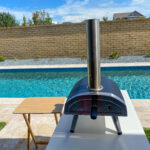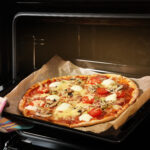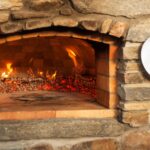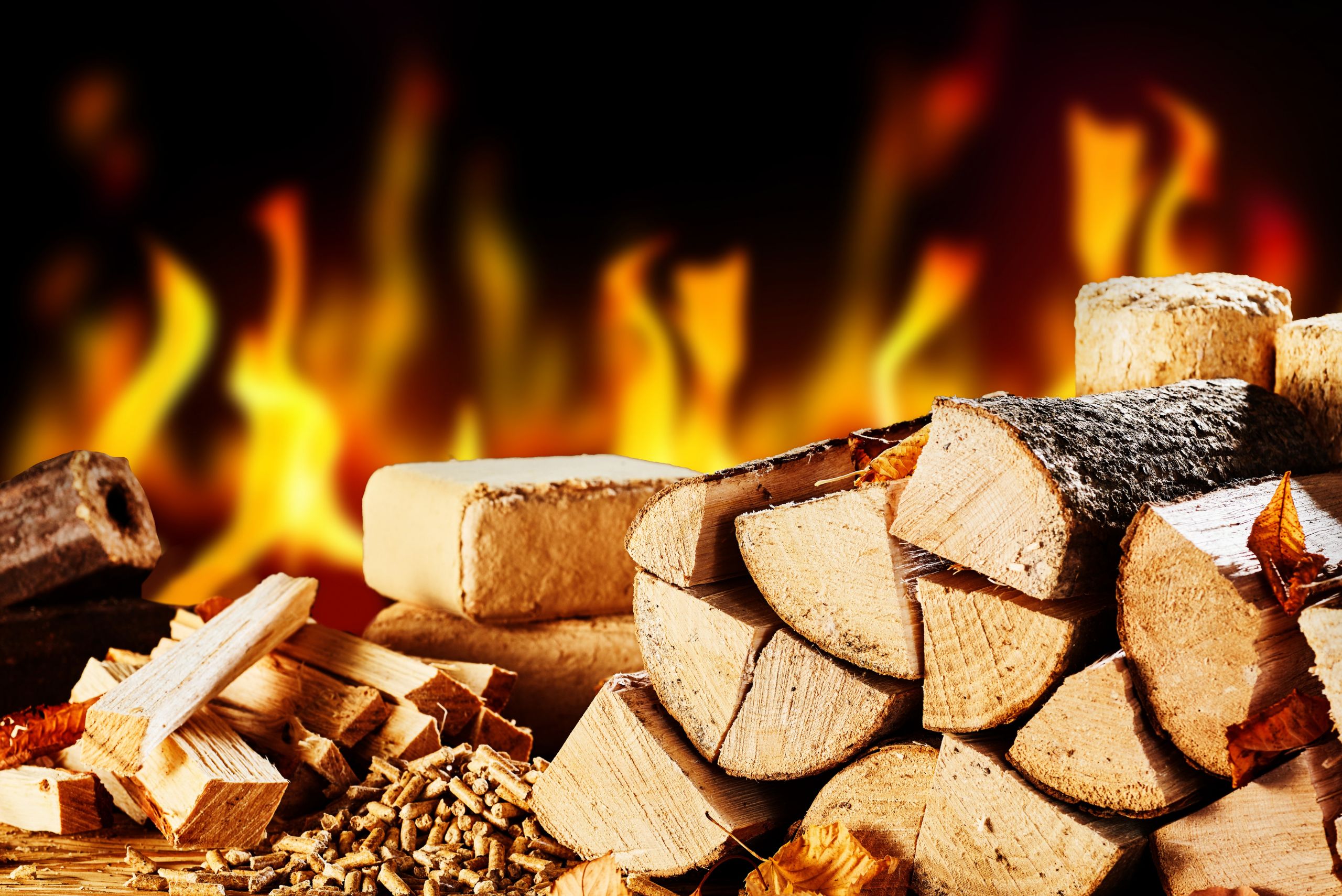When it comes to cooking pizza in a wood-fired oven, the type and quality of wood used can greatly impact the taste and texture of the final product. But how much wood is needed to properly heat a pizza oven? The answer to this question depends on a variety of factors, including the size of the oven, the type of wood being used, and the desired cooking temperature.
One important factor to consider when determining how much wood to use in a pizza oven is the size of the oven itself. Larger ovens will require more wood to properly heat, while smaller ovens may only need a few logs to get up to temperature. Additionally, the type of wood being used can impact the amount needed, as some woods burn hotter and longer than others.
Another key consideration is the desired cooking temperature. Higher temperatures will require more wood to maintain, while lower temperatures may only require a small amount of fuel. Ultimately, the amount of wood needed for a pizza oven will vary depending on a number of factors, and may require some experimentation to find the perfect balance.
Understanding Wood-Fired Pizza Ovens
Wood-fired pizza ovens are a popular choice among pizza enthusiasts due to the unique flavor and texture they impart to the pizza. However, cooking with wood-fired ovens requires some knowledge and understanding of how they work.
One of the most important factors to consider when cooking with a wood-fired pizza oven is the type of wood you use. Different types of wood have different burning characteristics, which can affect the flavor and cooking time of your pizza. Some of the best types of wood for pizza ovens include oak, maple, cherry, and apple. These types of wood burn hot and evenly, producing a clean and smoke-free fire that is ideal for cooking pizza.
Another important factor to consider when cooking with a wood-fired pizza oven is the amount of wood you use. Using too little wood can result in a fire that is too weak to cook your pizza properly, while using too much wood can result in a fire that is too hot and can burn your pizza. As a general rule of thumb, you should use around 3-4 logs of wood per hour of cooking time. However, this can vary depending on the size of your oven and the type of wood you are using.
It is also important to note that cooking with a wood-fired pizza oven requires some patience and practice. Unlike a conventional oven, wood-fired ovens do not have a thermostat or timer, so you will need to rely on your senses to determine when your pizza is ready. The key is to keep an eye on the color and texture of the pizza crust, and to rotate the pizza regularly to ensure even cooking.
In summary, cooking with a wood-fired pizza oven can be a fun and rewarding experience, but it does require some knowledge and understanding of how these ovens work. By using the right type and amount of wood, and by practicing patience and attention to detail, you can create delicious and authentic wood-fired pizzas in your own backyard.
Types of Wood for Pizza Ovens
When it comes to cooking pizza in a wood-fired oven, the type of wood you use can affect the taste and texture of your pizza. Here are the three main types of wood to consider when firing up your pizza oven.
Hardwood
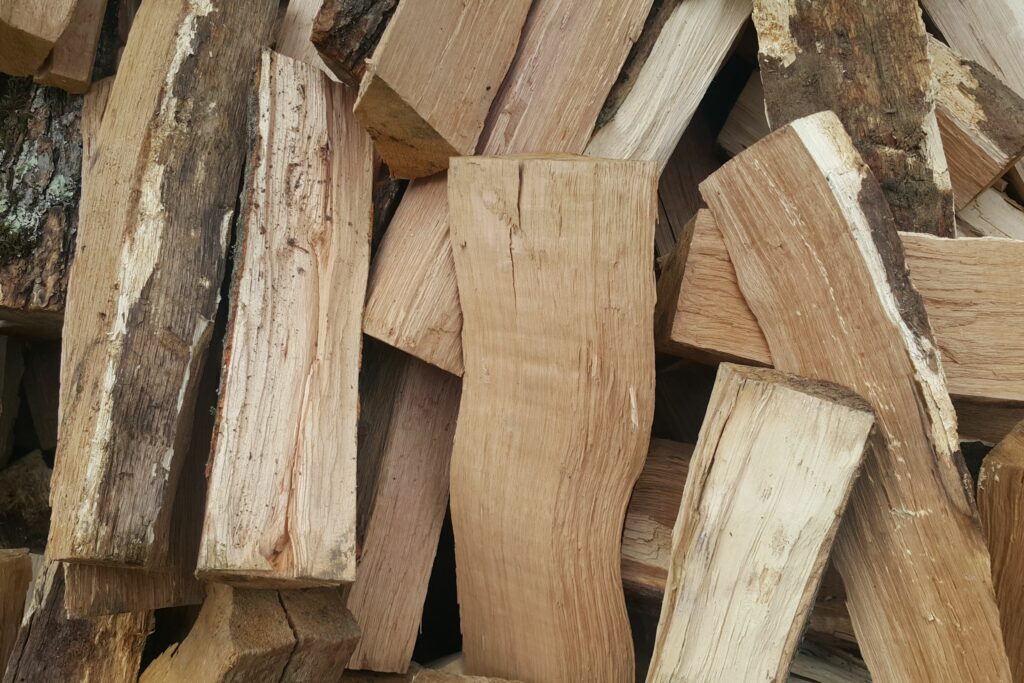
Hardwood is the most common type of wood used in pizza ovens. It produces a high heat and burns for a longer period of time than softwood. Some of the best hardwoods to use in a pizza oven include oak, maple, ash, beech, and birch. Oak is the most popular choice because it burns hot and has a mild flavor that won’t overpower your pizza.
Softwood
Softwood is a cheaper and more readily available option than hardwood, but it doesn’t burn as hot or for as long. It’s also more likely to produce a lot of smoke, which can affect the taste of your pizza. Pine, fir, and spruce are common types of softwood that can be used in a pizza oven. However, they are not recommended for prolonged use as they can produce creosote buildup that can lead to chimney fires.
Fruitwood
Fruitwood is a type of hardwood that is often used for smoking meats and adding flavor to grilled foods. It burns hot and produces a sweet, fruity aroma that can add a unique flavor to your pizza. Some of the most popular fruitwoods to use in a pizza oven include apple, cherry, and pecan. However, fruitwood can be expensive and harder to find than other types of wood.
When choosing the type of wood to use in your pizza oven, it’s important to consider the heat output, burn time, and flavor profile of each type. Hardwood is the most popular choice for its high heat output and longer burn time, while fruitwood can add a unique flavor to your pizza. Softwood should be used sparingly due to its lower heat output and potential for creosote buildup.
How Much Wood Is Needed
When it comes to cooking with a wood-fired pizza oven, one of the most important factors to consider is how much wood is needed. The amount of wood needed will depend on the size of the oven, the desired temperature, and the cooking duration.
Size of the Oven
The size of the oven will have a significant impact on how much wood is needed. Generally, the larger the oven, the more wood will be required. For example, a small oven with a cooking surface of 12 inches will require significantly less wood than a larger oven with a cooking surface of 36 inches.
Temperature Requirements
The desired temperature is another important factor to consider when determining how much wood is needed. The hotter the oven needs to be, the more wood will be required. For example, if you are cooking pizza at a temperature of 800°F, you will need more wood than if you were cooking at 600°F.
Cooking Duration
The cooking duration is the final factor to consider when determining how much wood is needed. The longer the cooking duration, the more wood will be required. For example, if you are cooking pizza for an hour, you will need more wood than if you were cooking for 30 minutes.
To give you an idea of how much wood is needed for a wood-fired pizza oven, here is a general guideline:
| Oven Size | Temperature | Cooking Duration | Wood Required |
|---|---|---|---|
| 12 inches | 600°F | 30 minutes | 2-3 pieces |
| 24 inches | 700°F | 45 minutes | 4-5 pieces |
| 36 inches | 800°F | 1 hour | 6-7 pieces |
Keep in mind that these are general guidelines and the amount of wood needed may vary depending on the specific oven and cooking conditions. It is always a good idea to start with a smaller amount of wood and add more as needed to avoid over-firing the oven.
Factors Affecting Wood Consumption
When it comes to using a wood-fired pizza oven, one of the most important factors to consider is how much wood to use. The amount of wood you need will depend on a number of factors, including weather conditions, oven efficiency, and wood moisture content.
Weather Conditions
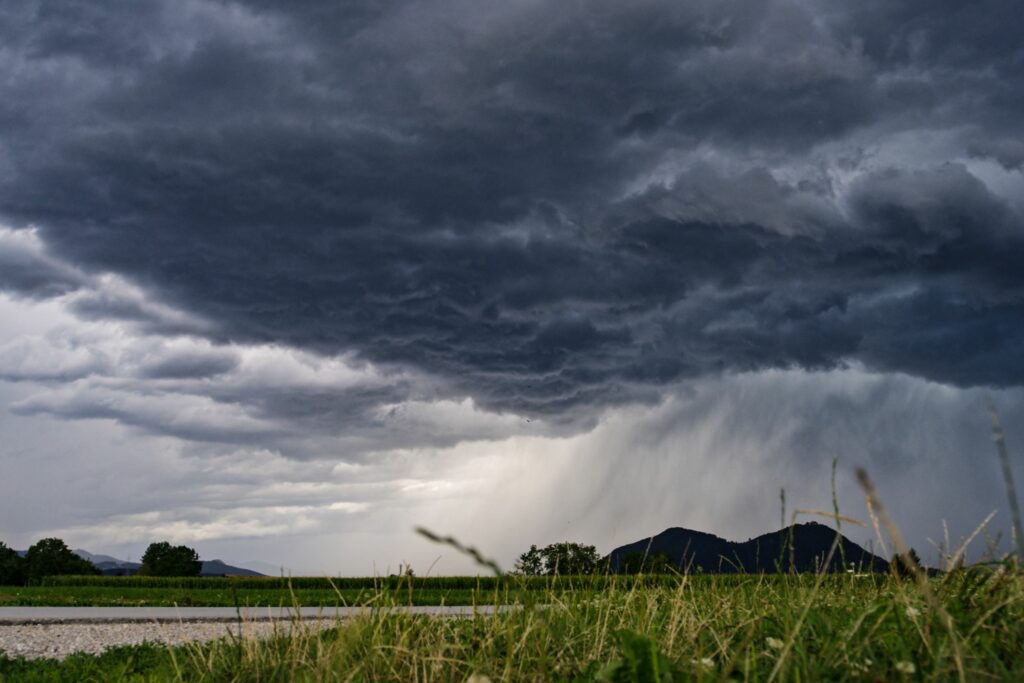
Weather conditions can have a significant impact on how much wood you need to use in your pizza oven. In colder weather, you will need to use more wood to maintain the desired temperature in your oven. On the other hand, in warmer weather, you may be able to use less wood to achieve the same temperature.
Oven Efficiency
The efficiency of your pizza oven can also affect how much wood you need to use. A well-designed and properly insulated oven will require less wood to maintain the desired temperature compared to a poorly designed or insulated oven. Therefore, it is important to ensure that your oven is properly insulated and designed to minimize heat loss.
Wood Moisture Content
The moisture content of the wood you use can also affect how much wood you need to use in your pizza oven. Wet or green wood will require more heat to burn off the moisture, which can result in a longer burn time and more wood consumption. On the other hand, dry wood burns more efficiently and requires less wood to achieve the desired temperature.
In summary, weather conditions, oven efficiency, and wood moisture content are all important factors to consider when determining how much wood to use in your pizza oven. By optimizing these factors, you can reduce your wood consumption and achieve the desired temperature in your oven more efficiently.
Sourcing Wood for Pizza Ovens
When it comes to cooking with a wood-fired pizza oven, the type of wood you use can make a big difference in the flavor and quality of your pizza. But where do you get the wood? In this section, we’ll cover two options for sourcing wood for your pizza oven: buying pre-cut wood and cutting your own wood.
Buying Pre-cut Wood
One of the easiest ways to get wood for your pizza oven is to buy pre-cut wood. Many local hardware stores and home improvement centers sell wood specifically for pizza ovens. You can also find pre-cut wood online from retailers like Amazon and Cutting Edge Firewood.
When buying pre-cut wood, it’s important to look for wood that has been kiln-dried. Kiln-dried wood has been dried in a special oven, which removes moisture from the wood and makes it burn more efficiently. This results in a hotter, longer-lasting fire that’s perfect for cooking pizza.
Another thing to consider when buying pre-cut wood is the type of wood. Hardwoods like oak, hickory, and pecan are great choices for pizza ovens because they burn hot and produce little ash. Sweeter hardwoods like cherry, maple, and apple can also be used, but are less common.
Cutting Your Own Wood
If you have access to a lot of wood, cutting your own wood can be a cost-effective way to get wood for your pizza oven. However, it’s important to make sure the wood is properly seasoned before using it in your oven.
To season wood, it needs to be split and stacked in a dry, well-ventilated area for at least 6 months to a year. This allows the wood to dry out and reduces its moisture content. Wet or green wood can produce a lot of smoke and creosote, which can affect the flavor of your pizza and even damage your oven.
When cutting your own wood, it’s important to use the right tools and safety equipment. A chainsaw is the most efficient tool for cutting wood, but it can also be dangerous if not used properly. Always wear eye and ear protection, gloves, and sturdy boots when cutting wood.
In summary, sourcing wood for your pizza oven can be done by buying pre-cut wood or cutting your own wood. When buying pre-cut wood, look for kiln-dried hardwoods like oak, hickory, and pecan. When cutting your own wood, make sure it’s properly seasoned and use the right tools and safety equipment.
Safety Considerations
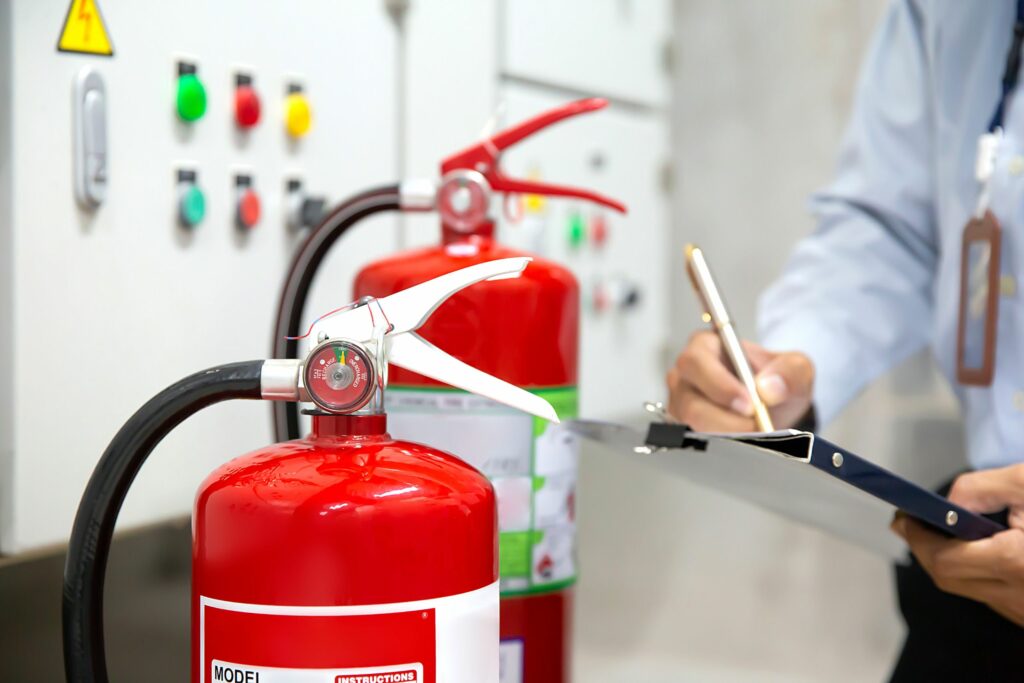
When using a pizza oven, safety should always be a top priority. Here are some safety considerations to keep in mind:
- Location: Make sure your pizza oven is installed in a safe location away from any flammable materials such as trees, bushes, or buildings. It is also important to ensure that the oven is on a level surface and is not at risk of tipping over.
- Ventilation: Adequate ventilation is crucial when using a pizza oven. Without proper ventilation, the buildup of carbon monoxide and other harmful gases can be dangerous. Always make sure that your pizza oven is properly ventilated and that the area around it is clear of any obstructions.
- Fuel: The type of fuel you use in your pizza oven can also affect its safety. It is recommended to use dry, seasoned hardwoods such as oak, alder, maple, ash, beech, or birch. Avoid using softwoods like pine as they can produce soot and creosote that can be harmful to humans.
- Fire Safety: Always have a fire extinguisher nearby when using a pizza oven. It is also important to keep the area around the oven clear of any flammable materials. Never leave the oven unattended, and always make sure that the fire is completely extinguished before leaving the area.
By following these safety considerations, you can ensure that your pizza oven is used safely and responsibly.
Conclusion
In conclusion, the amount of wood needed for a pizza oven depends on various factors such as the type of wood, the size of the oven, and the cooking temperature. It is important to use dry and seasoned hardwoods for optimal results. Softwoods should be avoided as they produce more smoke and less heat.
For a small pizza oven, approximately 2-3 logs of hardwood with a diameter of 4-6 inches and a length of 12-16 inches should be sufficient to reach a temperature of 700-800°F. For larger ovens, more wood will be required, and it is recommended to use a mix of hardwoods to maintain a consistent temperature.
When using a pizza oven, it is essential to monitor the fire and add more wood as needed to maintain the desired temperature. It is also important to let the fire burn down to hot coals before placing the pizza inside the oven.
Overall, the key to achieving the perfect pizza in a wood-fired oven is to use the right amount and type of wood, and to maintain a consistent temperature throughout the cooking process. By following these guidelines, you can enjoy delicious homemade pizza with the authentic taste and crispy crust that only a wood-fired oven can provide.


